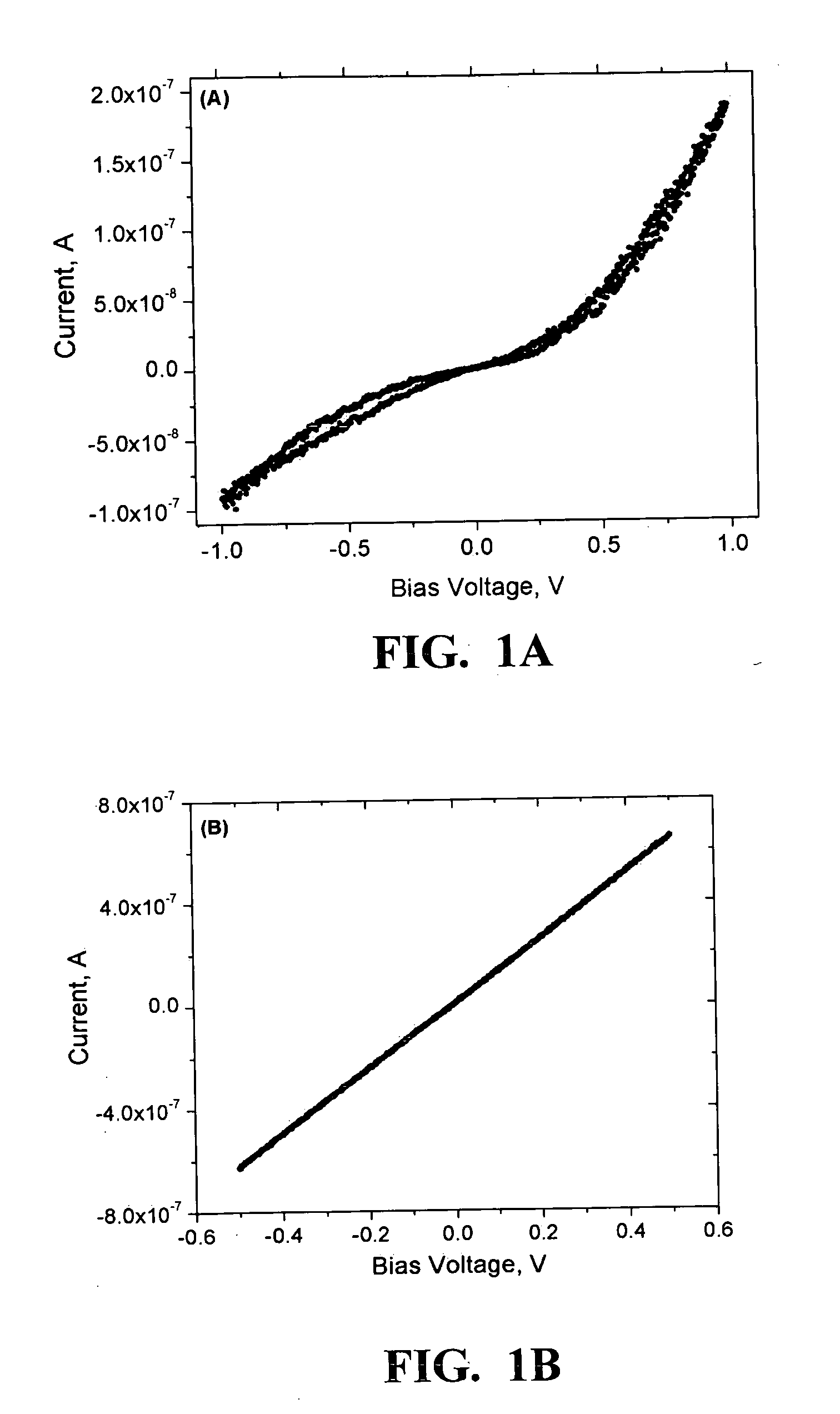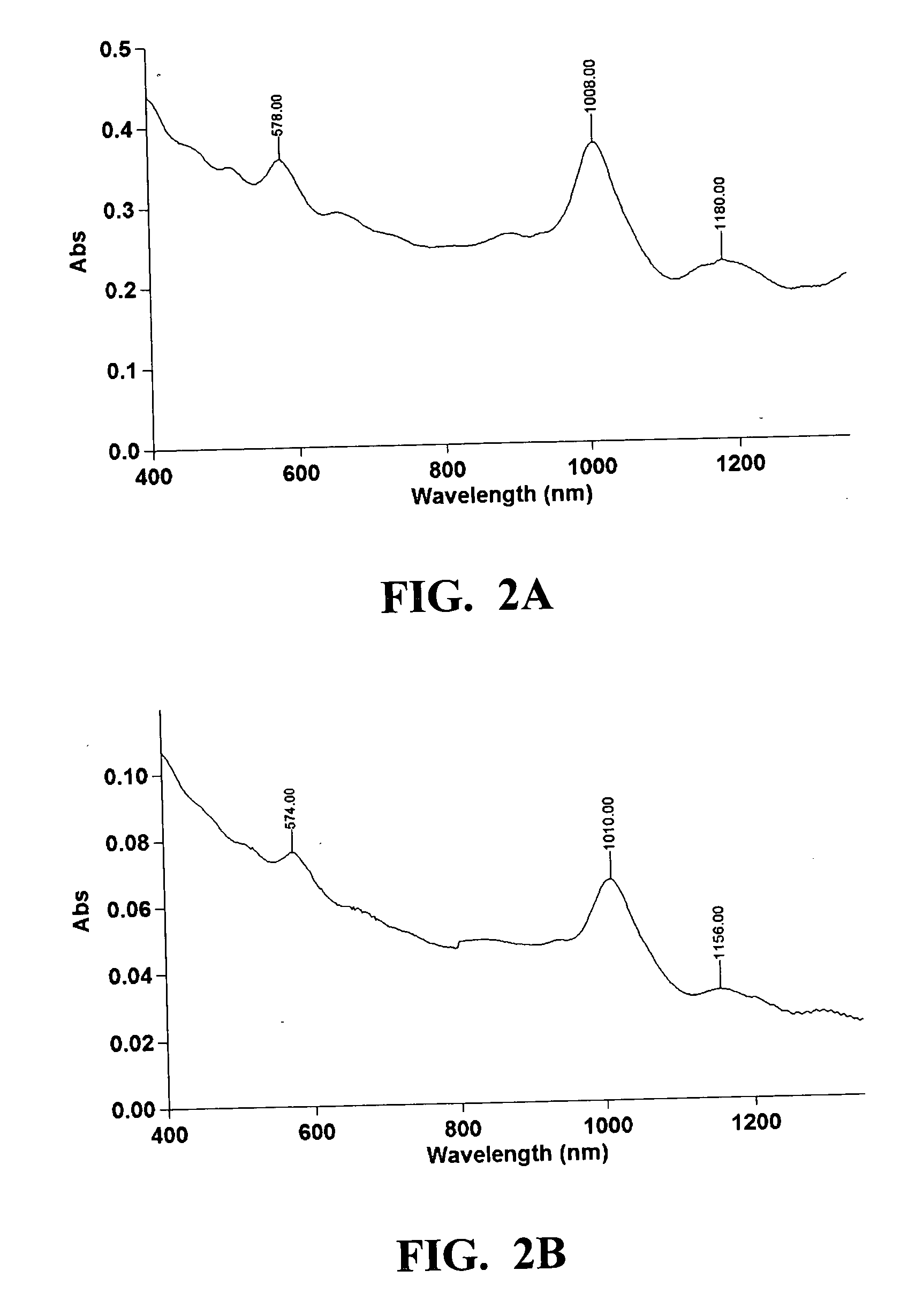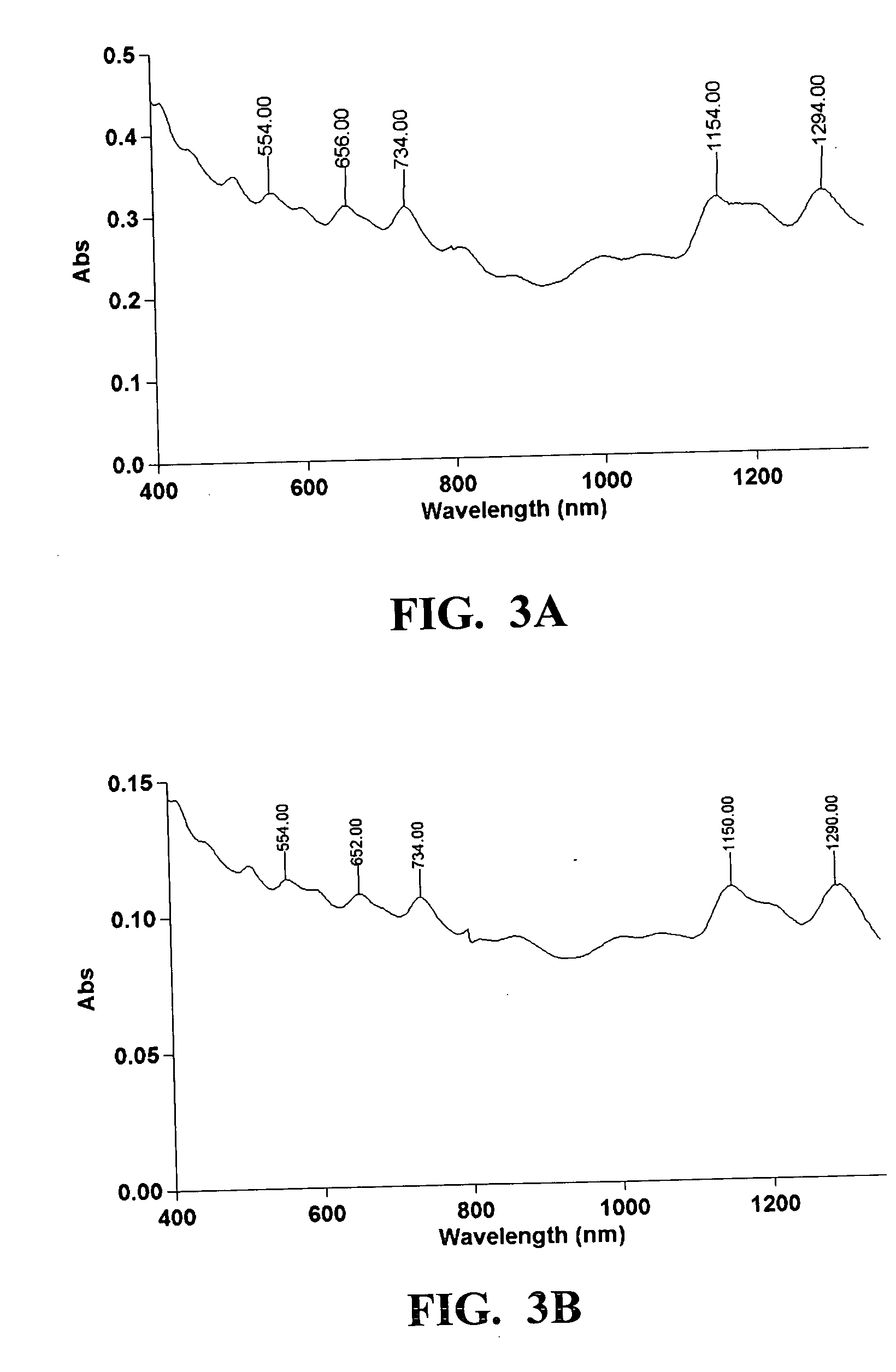Single-walled carbon nanotube composites
a carbon nanotube, single-walled technology, applied in the direction of food preservation, meat/fish preservation by drying, thin material processing, etc., can solve the problems of aggregation, difficult manipulation of nanotubes, and perturbation of the electronic structure of tubes by bundling
- Summary
- Abstract
- Description
- Claims
- Application Information
AI Technical Summary
Problems solved by technology
Method used
Image
Examples
example 1
[0077] HiPCO carbon nanotubes (CNI, Houston, Tex.) were suspended at 0.25 mg / mL in 200 mL of a 1% solution of poly(ethyleneoxide-propylene oxide) (3:1) (Polysciences Inc., Warrington, Pa.) in water. The suspension was then homogenized for 0.5 h using a high shear homogenizer (Polyscience X-360). The suspension was then sonicated in a cup-horn sonicator for 20 min at a power of 540 W. The suspension was then distributed into 6 centrifuge tubes and spun for 4 h at 28,000 rpm in a swinging bucket rotor (Beckman SW-28). The supernatant was collected and concentrated in an Amicon ultrafiltration cell using a YM-100 membrane (Millipore) down to a volume of 15-30 mL.
[0078] 1 g of the carbon nanotubes was then purified by heating the tubes in air for 20 hours. The tubes were then treated by sonicating with 100 ml of concentrated hydrochloric acid in a bath for 30 minutes. The carbon nanotubes were collected by filtration and washed with distilled water, then ethanol, followed by air drying...
example 2
[0079] 1 ml of a GT20 DNA dispersion of carbon nanotubes (prepared as described in U.S. Pub. Appl. 20040132072) which contained about 0.3 mg CNTs per ml, was added to 0.89 g of a hydrolyzed tetramethoxy silane solution as described in Example 1 (3.8 g of tetramethoxysilane were added to 4.5 g of water followed by 66 mg of 0.04 M HCI). The solution was placed in a tube (ca. 3 mm in diameter and 15 cm long) and placed in an oven at 70° C. overnight. The solution gelled in a few minutes. The top was removed from the tube after 2 hours and the gelled material was left overnight at 70° C. The temperature was increased to 90° C. for two days to dry the gel. The dried gel was then washed with excess water and then re-dried before testing. A black, hard glass like composite material resulted containing 0.85% weight of CNTs.
[0080] The example was repeated as described above except with 0.25 g of the hydrolyzed tetramethoxy silane solution, to produce a black, hard glass like composite mater...
example 3
[0082] Carbon nanotubes (SouthWest NanoTechnologies, Inc., Norman, Okla.) were suspended at 0.25 mg / mL in 200 mL of a 1% solution of Triton™ X-405 (Aldrich) in water. The suspension was then homogenized for 0.5 h using a high shear homogenizer (Polyscience X-360). The suspension was then sonicated in a cup-horn sonicator for 20 min at a power of 540 W. The suspension was then distributed into 6 centrifuge tubes and spun for 4 h at 28,000 rpm in a swinging bucket rotor (Beckman SW-28). The supernatant was collected and concentrated in an Amicon ultrafiltration cell using a YM-100 membrane (Millipore) down to a volume of 15-30 mL.
[0083] 5 ml of the carbon nanotubes which contained about 0.06 mg per ml, were then added to 10 microliters of the hydrolyzed tetramethoxy silane solution, as described in Example 1. (3.8 g of tetramethoxysilane was added to 4.5 g of water followed by 66 mg of 0.04 M HCI, left for 4 hours). 5 microliters of the above brown colored solution was spread out on ...
PUM
| Property | Measurement | Unit |
|---|---|---|
| Percent by mass | aaaaa | aaaaa |
| Electrical conductance | aaaaa | aaaaa |
| Electrical conductivity | aaaaa | aaaaa |
Abstract
Description
Claims
Application Information
 Login to View More
Login to View More - R&D
- Intellectual Property
- Life Sciences
- Materials
- Tech Scout
- Unparalleled Data Quality
- Higher Quality Content
- 60% Fewer Hallucinations
Browse by: Latest US Patents, China's latest patents, Technical Efficacy Thesaurus, Application Domain, Technology Topic, Popular Technical Reports.
© 2025 PatSnap. All rights reserved.Legal|Privacy policy|Modern Slavery Act Transparency Statement|Sitemap|About US| Contact US: help@patsnap.com



